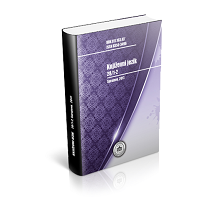Konotacije leksičkog sloja motiva stida u engleskim prijevodima bošnjačke balade “Hasanaginica”
Connotations of the lexical layer of shame motif in English translations of Bosniak ballad “Hasanaginica”
Author(s): Amina ArnautovićSubject(s): Lexis, Semantics, Bosnian Literature, Translation Studies, Stylistics
Published by: Institut za jezik
Keywords: lexico-stylistic analysis; motif of shame; connotations; English translations of Bosniak ballad “Hasanaginica”;
Summary/Abstract: Translating a work of literary art, especially poetry, also means translating its style. At the lexico-stylistic level, style manifests itself in both denotative and connotative meanings of the lexical units of a text. By analyzing the connotations of the lexical layer of shame motif in English translations of Bosniak ballad “Hasanaginica”, we can identify and problematize the interpretation of this motif in the target texts in relation to the source text. Applying the method of lexico-stylistic analysis to the key verses of the shame motif, both in the source text and in the target texts in English, we examine the ways in which different translators build the mystical motif as the only abstract concept that never develops into a poetic image, leaving space for multi-layered connotations that are imposed on the reader. The results of the analysis point to the translations that are closest to the source text in terms of containing minimal differences in the degree of their interpretive limitation or intrusiveness. The most vividly evoked key verse of the shame motif is found in Francis Jones’ translation. However, the final vocabulary choice made by a discerning translator possessing a high degree of stylistic awareness should also be influenced by other aspects of the original text, such as its established rhythmic pattern or meter that requires preservation and other formal characteristics of this ballad, which are not to be found in Jones’ translation. Therefore, our conclusion is that the results of lexico-stylistic analysis of the original should be weighed against the results of analysis on other linguo-stylistic levels of expression (phonostylistic and syntaxostylistic) in order to synthesize them as successfully as possible, which could help recreate a new, more effective and reliable translation of this masterpiece of our oral literature.
Journal: Književni jezik
- Issue Year: 2021
- Issue No: 32
- Page Range: 167-189
- Page Count: 23
- Language: Bosnian

